Low impedance speakers
Standard loudspeakers comprise of 3 main components: a cone, a magnet and a coil. Passing a current through the coil causes the attached cone to move forward or backward. The coil is fed the electrical signal from an amplifier, which provides enough electricity to move the cone quickly, causing it to vibrate and make sound.
Since the coil is wound from very thin wire, there is a certain amount of resistance to the electricity passed through it. This, coupled with some other electrical characteristics, is known as impedance.
Impedance is measured in Ohms. Higher impedance opposes the output of the amplifier more, causing it to deliver less power, whereas lower impedance allows the amplifier to deliver more power. The amplifier needs this impedance to stop itself from over-working and burning itself out, and is an important consideration when matching amplifiers and speakers together in a system.
Impedance visual representation
The speaker impedes any electrical current flowing through it, in the same way that the neck of an hourglass impedes the sand flow.
- The narrow neck controls the flow of sand just as a speaker’s impedance controls the flow of current.
- Two narrow necks makes it half as difficult for the sand to pass through, just as two parallel speakers have half the impedance of one, allowing twice as much power to flow through.
- If the neck is too wide it offers too little control, just as when the speaker impedance is too low and allows too much power to flow from the amplifier, resulting in eventual failure.

Basic low impedance set-up
For any given amplifier, the impedance of the speakers attached to it must not be below the rated output impedance of the amplifier and must be rated to handle the power that the amplifier will deliver at that impedance.
For instance, a 2 x 100W amplifier may be rated down to a minimum of 4 Ohms on each side. However, if an 8 Ohm speaker is attached to each side, the amplifier may only deliver 2 x 70W. Therefore, 70W would be the minimum handling capacity for these speakers.
Please refer to the instruction manual of the amplifier being used to find the power output at 4 Ohms, 8 Ohms, etc

Parallel low impedance set-up
When 2 speakers are connected together in parallel (that is “+” to “+” and “-” to “-”), the electricity from the amplifier can flow through 2 routes instead of one. Having twice the number of routes to flow through effectively, means that it is half as difficult for the electricity to get around the circuit. Therefore, the impedance (resistance to flow) is halved when 2 of the same type speaker are linked together in parallel.
For 2 speakers with 8 Ohms impedance, the overall impedance (or combined load) will be 4 Ohms, allowing the 100W amplifier to deliver its full output across this pair of speakers. The power will be shared, so each speaker will receive 50W (even though both are capable of handling up to 70W).


Contents
Related Items
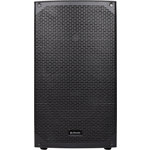
CAB Series Passive Cabinets
200mm (8") 150W
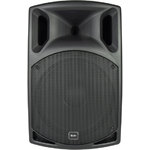
QX Series Passive Speaker Cabinets
15" Black
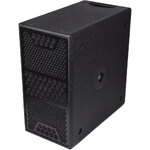
CASA-28B Passive Sub 300Wrms
CASA-28B
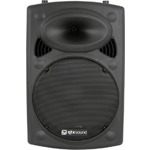
QR Series Passive Moulded PA Speaker Boxes
15"
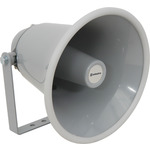
Low Impedance Horn 8" 15W

